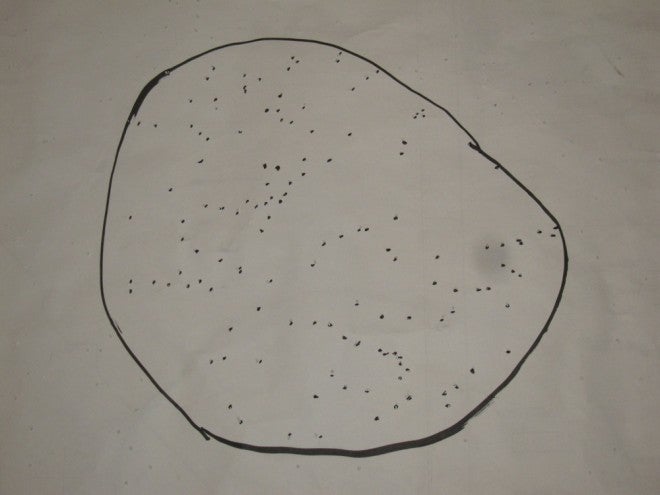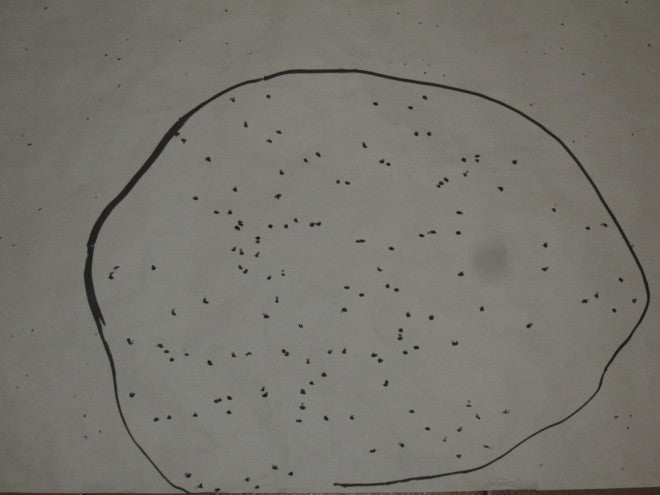This post was written by Henry SF Nachaj.
I have been patterning shotguns, shotshells and chokes since the late 80s. Some interesting results were discovered as well as some strange ones: stringing patterns! Stringing patterns I discovered were due to pellets sticking together.
During the 90s, there was a sudden surge in aftermarket “performance”, extended chokes. I and my good friend Bruce Buck shot probably several flats of shells testing aftermarket chokes and the original manufacturer’s chokes. While there were differences with some shotgun manufacturer’s original choke dimensions and some miss labeling, Beretta did not have that problem. I checked the original Mobile chokes of Beretta versus some extended chokes including Briley. There were no visual differences between the factory Beretta mobile chokes and the aftermarket.
In 2003, I got a Beretta Optima Gold Sporting. It had a much larger bore and longer extended chokes. The pattern tests that I performed, clearly showed a tighter central core with less flyers and more so with premium 2 ¾ dram shotshells. In 2004, I got a Beretta DT10L that also had the Optima bore and chokes. Once more, the patterns had a tight central core whit few flyers. I tried out some aftermarket chokes including the Muller chokes. With premium ammunition, also at 2 ¾ dram, there was no difference in patterns. Some of the stainless/steel chokes shot worse and some were unusually tight. By measuring the outlet of those chokes, I discovered that they had a dimension that was tighter than the nameplate suggested. They also upset the shotgun balance with that additional weight at the muzzle. I got a set of Muller 0, 1, 2 and 3. They made the shotgun a bit livelier and would pattern the cheap ammunition slightly better and the premium with no visible difference.
Last May, I got a DT11 with the new “Steelium Pro” barrels. These new barrels are made with a special tri-alloy, are cold hammer forged and then chrome lined. The have an exceptionally long forcing cone with a short parallel section before the choke area. The new chokes are longer and called “OptimaChoke HP”. They are longer than the previous Optima chokes. The first thing that I noticed was the reduced perceived recoil. It felt as half of my DT10L and on par with Beretta’s gas shotguns. I knew that the DT11 did pattern well as the breaks were very good and anything close was smoke. I did not have a chance last year to perform pattern tests.
Today, I managed a few patterns before the heavy rain came. I shot my tests at a measure 30M (32.5 yards). I only had time to use Federal Gold Medal 2 ¾ number 8 shot. I use LM most of the time as it provides a nice useable pattern form 15 to 30 yards while maintaining a reasonable shorter shot string. Tighter chokes have very short shot strings as the front pellets provide for a tight front that gives the pellets behind less wind resistance. It is called “drafting” in racing parlance. That is a car tucks into close behind the one in front and thus helps both to go faster with less energy use. I first shot the Muller 2. It showed a fairly even pattern with a few holes. Beretta Italy sent me a pair of “OptimaChoke HP” flush, LM. The Beretta showed a tighter central core (about 14 inches) with virtually no holes except to the lower right. The Muller weighs in at 204 grain (.47 Oz) while the Beretta at exactly 300 grain (.7 Oz). I don’t think that 100 grain (.2 Oz) difference will make a difference in shotgun feel or the “momentum of inertia”.
The “OptimaChoke HP” ¾ extended chokes are still not in production. I will use the flush chokes as they have shown a better center core. Once more, Beretta has produced a well-engineered product with superb quality control that provides optimum performance without having to go to the aftermarket.
 Your Privacy Choices
Your Privacy Choices


